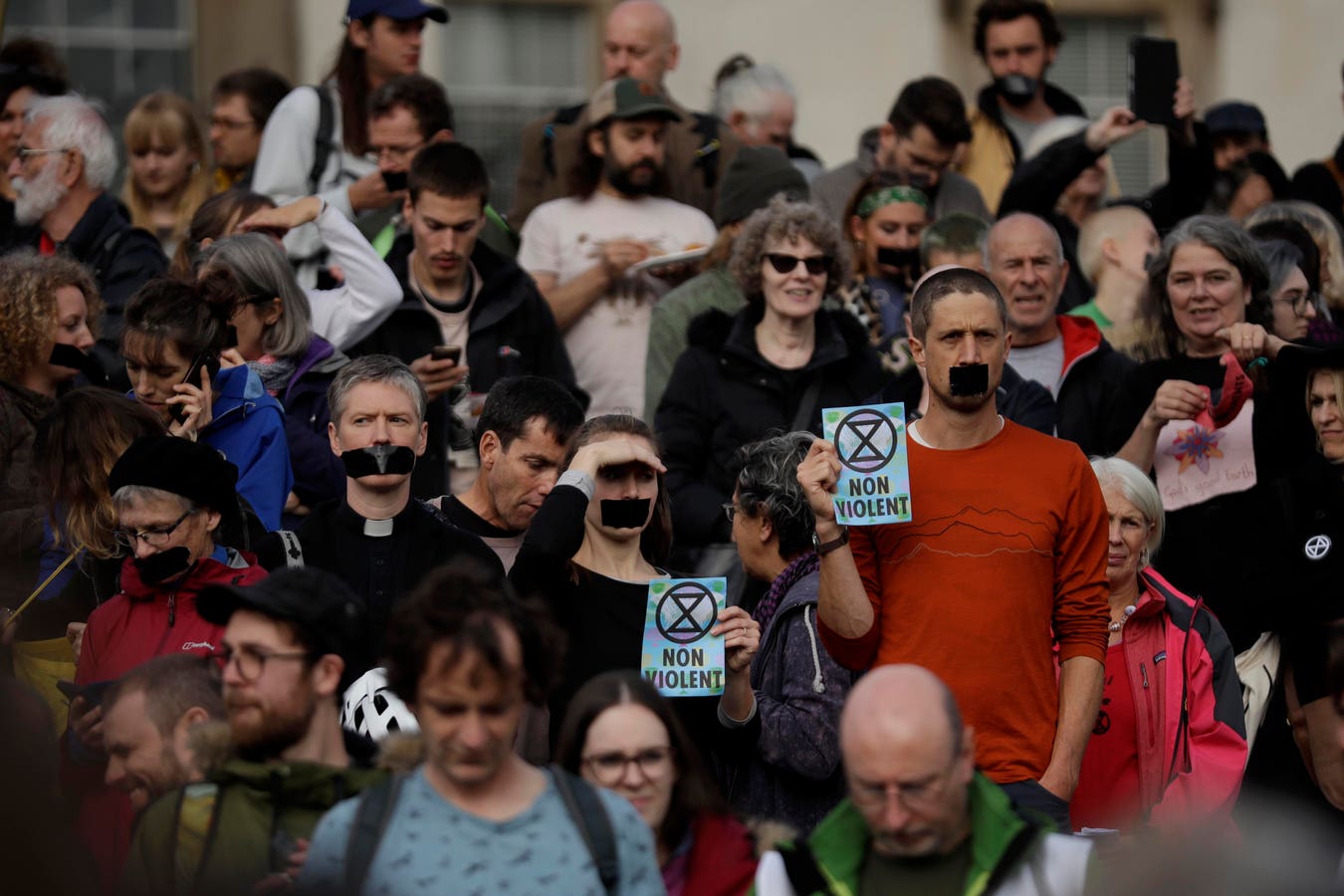The U.K.-originating climate activist group Extinction Rebellion (XR) has caused a substantial amount of disruption. Its tactics include blocking traffic, grounding flights, and gluing themselves to public buildings and to each other. This has created inconvenience for law-abiding British citizens and annoyance to the British government. As a result, almost 3,000 XR activists have been arrested in London in the mass actions of April and October this year, with hundreds more arrests around the world as XR groups spring up in 70 countries from Australia to the U.S. One of its founders, Roger Hallam, recently spent over a month in jail and has spoken about this in a video. A number of prominent members of XR have had their phones and laptops confiscated by police.
Yes, XR is causing disruption. It is their job. This movement is seeking to create a still-insufficient sense of urgency amongst all of us about the threat of climate change to human society. In order to do so, I believe that XR needs investors. Investors also need XR if they are going to be able to earn the returns they need for their beneficiaries—assuming they’re still around.
The goal of The Paris Agreement is to keep the Earth’s average temperature from rising 1.5-2.0° C above pre-industrial levels. Current models predict that the temperature will rise by 3.0-4.0°C by 2100. Should this happen, this will be a nightmare world, perhaps supporting, at best, one billion people, compared to the 7.6 billion we have today, according to Johan Rockstrom, a noted climate scientist. 2100 is 81 years away; about the life expectancy of a child born in Europe or North America today.
Lending credence to these concerns, in October the U.S. Army issued a report saying that dealing with climate change could actually lead to its own collapse. And this month more than 11,000 scientist signatories from around the world stated, “clearly and unequivocally that planet Earth is facing a climate emergency.”

A United States Army uniform patch isolated on white. Includes clipping path. | GETTY
Yes, there is debate and uncertainty about this. But citing a variety of scientific sources, the NGO Plan B briefly summarizes both the horrors and probability of a 4°C warming scenario, including the Intergovernmental Panel on Climate Change’s (IPCC) own 2014 conclusions that it’s more likely than not “without additional mitigation efforts.” Let’s remember global emissions rose in 2017 and 2018! “To put in perspective, how many of us would choose to buckle our grandchildren to an airplane seat if we knew there was as much as a 1 in 20 chance of the plane crashing?” said Professor Veerabhadran Ramanathan in a statement. “With climate change that can pose existential threats, we have already put them in that plane.”
SUBSCRIBE TO OUR NEWSLETTER
Subscribe our newsletter to receive the latest news, articles and exclusive podcasts every week


